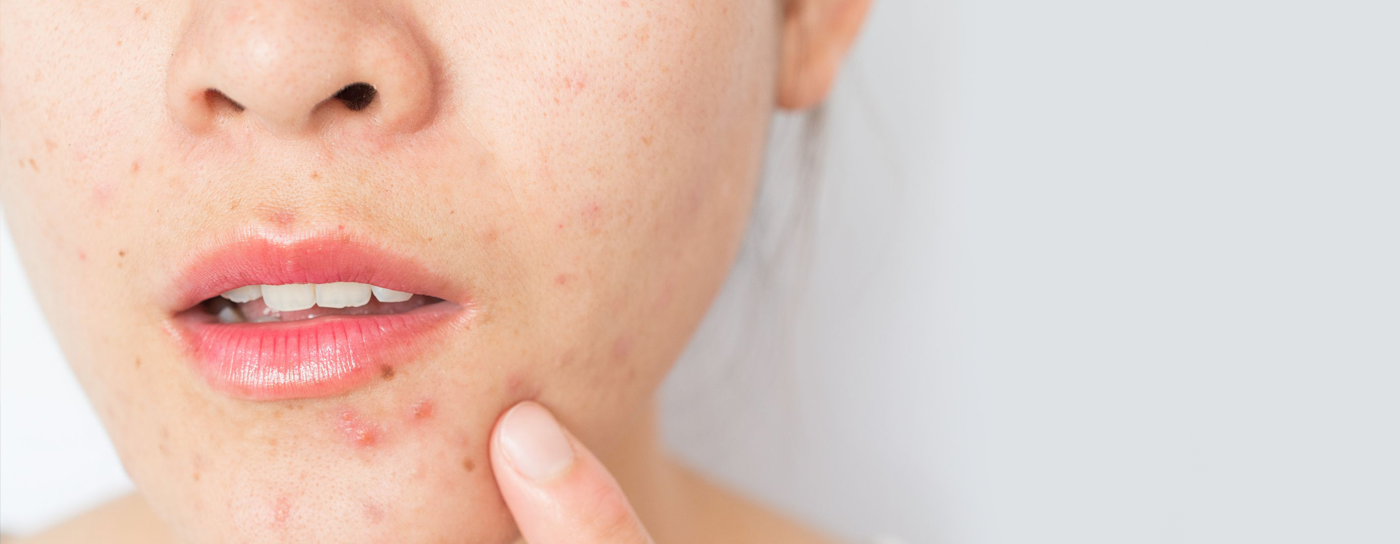ORDER BY 4/30 FOR GUARANTEED DELIVERY BY MOTHER’S DAY
30 DAY MONEY-BACK GUARANTEE ON YOUR FIRST ORDER
Your Bag is Empty
Your favorite skincare routine, specially formulated for your active life.
Select one of our subscription plans receive free auto-delivery and up to 40% off all products.
by Jude Jacob March 01, 2021

Acne affects more than 85% of teenagers. And nearly everyone has acne at some point in their lives. For many, it is a temporary issue that resolves by their mid-20s, but about 50% off cases will persist into adulthood.
The mechanism of premenstrual acne flares is still unknown, but it appears that slightly less than half of women experience premenstrual acne flares. Older women seem to experience a higher rate than younger women. The bottom line is that hormones and genetics are the main culprits when it comes to those monthly breakouts (and adult acne in general), but a good skincare routine is essential to support skin and clear acne.
Several hormones implicated in the regulation of sebaceous gland activity have been linked to acne. They include androgens, estrogens, progesterone, growth hormone, insulin, insulin-like growth factor-1 (IGF-1), corticotropin-releasing hormone (CRH), adrenocorticotropic hormone (ACTH), melanocortins and glucocorticoids. Read on to find out more about each.
Androgens
These are the most important hormones controlling sebaceous gland activity, stimulating their growth and differentiation.
Dihydrotestosterone (DHT) and dehydroepiandrosterone sulfate (DHEA-S) stimulate androgen receptors in sebaceous glands and the outer root sheath of hair follicles. This leads to an accumulation of sebum and keratin in follicles, resulting in comedones and providing the perfect growth environment for acne.
Conditions of androgen excess or hyperandrogenism are associated with increased sebum production and the development of acne.
Estrogen
Exogenous estrogens such as the oral contraceptive pill in high enough amounts actually suppresses sebum production and decreases acne lesions by increasing hormone binding globulins and decreasing circulating free testosterone.
Progesterone
The oscillation of sebum production in women during the menstrual cycle has been blamed on progesterone, but this has not been proved experimentally.
Progesterone administration can lead to acne, and when given to elderly women, it increases sebum production, but no such effect could be demonstrated in young women.
Some studies support the fact that progesterone levels are higher in females with severe acne vulgaris.
Acne and the menstrual cycle
Acne vulgaris is one of the most frequent skin disorders related to our menstrual cycle. It is mainly an issue during perimenstrual days (10 days before your period, plus the days you bleed).
The reasons for hormonal acne are not entirely clear, but these are the leading theories.
Some researchers say that before starting the period, there is not enough estrogen present with its “anti-sebum” effect. Without high estrogen, androgens increase sebum production, leading to increased pore clogging and the perfect environment for acne.
Other theories suggest that hormonal acne can be caused by a deficiency or a disequilibrium in the progesterone-estrogen balance.
Most skin imperfections related to hormonal premenstrual changes usually appear on the face, mainly around the chin.
Skincare
Although genetics and hormones are the culprits when it comes to periods and acne, it is essential to have a good skincare routine to support healthy skin. Here’s what our Dermatologist, Dr. Debi recommends:
AM:
STEP 1. Wash your face with PURIFY ME, our hydrating cleanser containing jojoba beads that removes dead skin cells, excess oils and unclogs pores.
STEP 2: Hydrate with REFRESH ME. Ylang Ylang flower oil and azulene have antiseptic, antibacterial, anti-inflammatory and anti-seborrheic properties.
STEP 3: SPF is always important, plus PROTECT ME contains antibacterial chamomile, melissa and rooibos that help prevent acne.

PM:
STEP 1. Gently cleanse away sweat & grime with PURIFY ME.
STEP 2. Use DETOX ME 1-3 nights a week. The Kaolin Clay in its formula removes dead skin cells and unclogs pores.
STEP 3: Apply RECOVER ME. It contains Niacinamide, proven to be effective against acne and scars. Copper tripeptide 1 and Lavender oil are anti-inflammatory and soothe breakouts.

Comments will be approved before showing up.